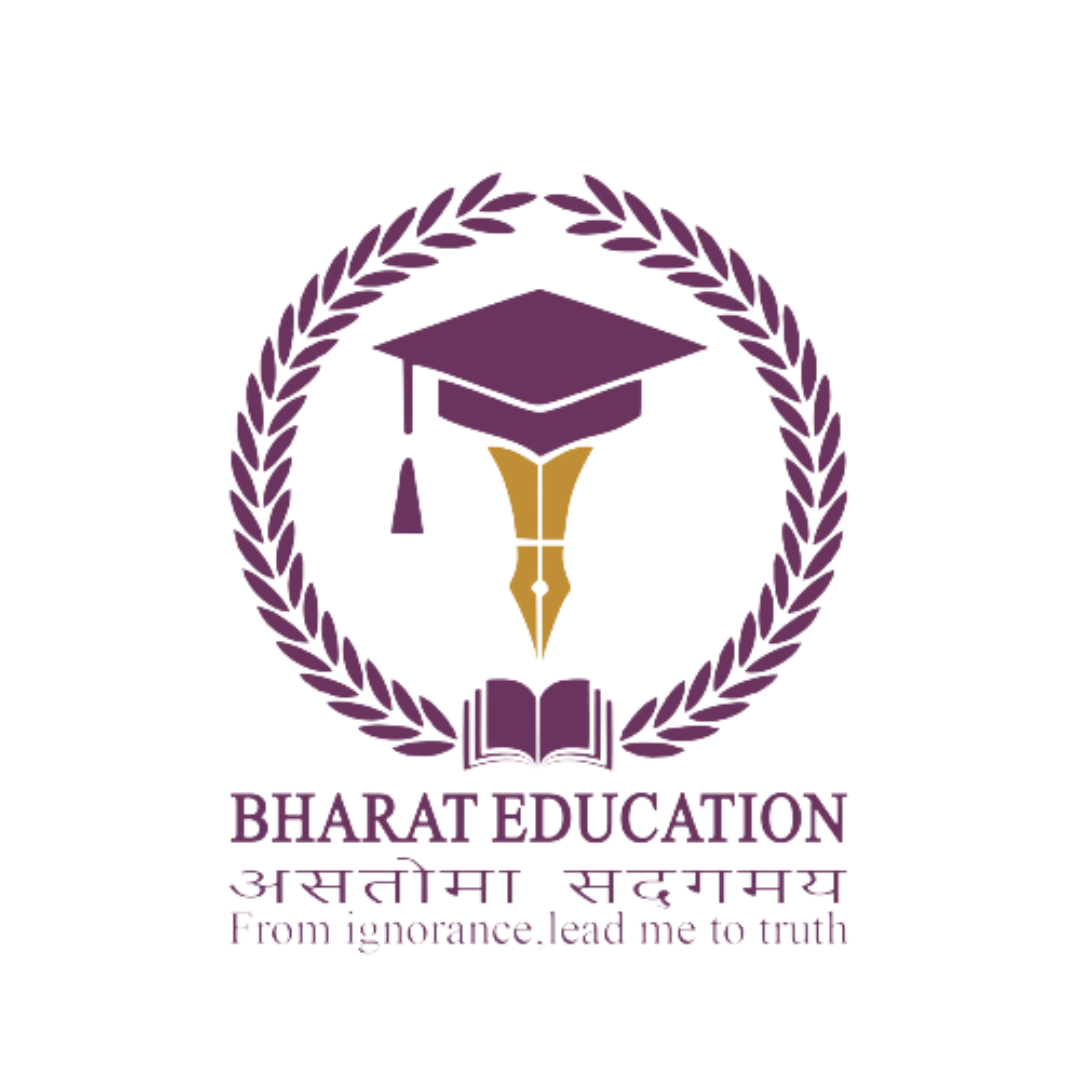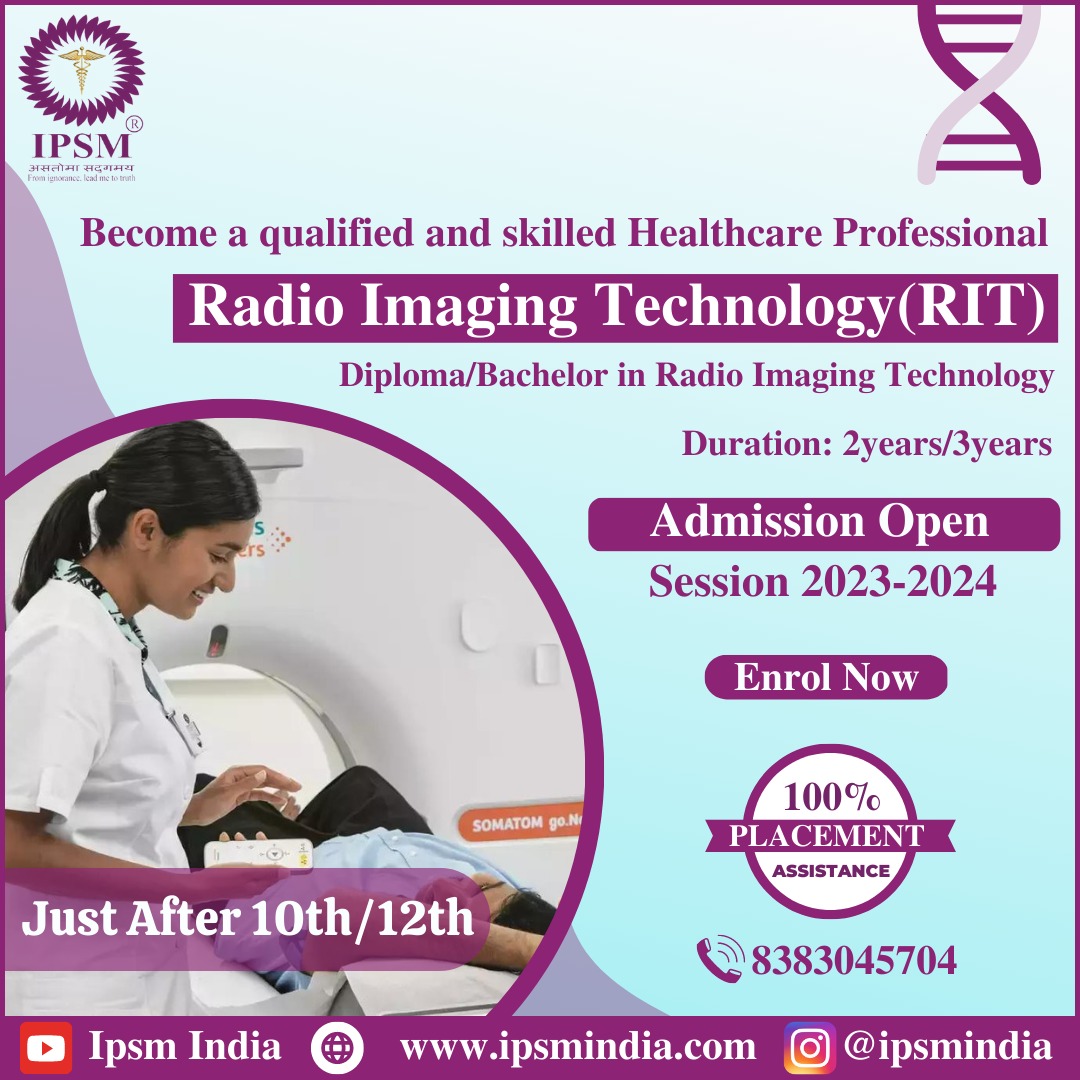

 Team Bharat Education
Team Bharat Education  |
Published on:
Feb 02, 2023
Views:
1250
|
Published on:
Feb 02, 2023
Views:
1250
Medical radio imaging technology refers to the use of various imaging techniques in the medical field to produce images of the human body for diagnostic and treatment purposes. A course in medical radio imaging technology would cover various imaging modalities such as X-ray, Computed Tomography (CT), Magnetic Resonance Imaging (MRI), Positron Emission Tomography (PET), and others.
The course would typically cover topics such as:
Graduates of this course may pursue careers as medical radiologic technologists, medical sonographers, and medical radiation therapists.
The scope of Radio Imaging Technology encompasses a wide range of diagnostic and therapeutic procedures that utilize various imaging techniques to produce images of the human body. Some of the key areas of focus within the field include:
X-ray imaging: This is a widely used imaging modality that uses ionizing radiation to produce images of bones and internal organs.
Computed Tomography (CT): CT scans use X-rays and computer processing to produce detailed, cross-sectional images of the body.
Magnetic Resonance Imaging (MRI): MRI uses a magnetic field and radio waves to produce images of the body's internal structures.
Positron Emission Tomography (PET): PET scans use radioactive tracers to produce images of metabolic processes within the body.
Ultrasound imaging: This is a non-invasive imaging technique that uses high-frequency sound waves to produce images of internal organs and tissues.
Nuclear medicine: This is a specialized field that uses radioactive materials to produce images of the body's organs and tissues and assess their function.
Interventional radiology: This is a sub-specialty of radiology that uses imaging guidance to perform minimally invasive procedures, such as biopsies, embolizations, and drainage of fluid collections.
The scope of medical radio imaging technology continues to evolve and expand as new imaging modalities and technologies are developed and introduced. Medical radio imaging technologists play a critical role in the diagnostic and therapeutic process, working closely with other healthcare professionals to provide the best possible patient care.

Medical radio imaging technicians play a critical role in the healthcare field by producing high-quality images that are used for diagnostic purposes. Some of the key duties and responsibilities of a medical radio imaging technician include:
Operating imaging equipment: Technicians are responsible for operating and maintaining complex medical imaging equipment, such as X-ray machines, CT scanners, MRI machines, and ultrasound machines.
Preparing patients for exams: Technicians work closely with patients to prepare them for imaging exams, explain the procedure, and answer any questions they may have.
Image acquisition: Technicians are responsible for positioning patients, adjusting equipment settings, and acquiring high-quality images that can be used for diagnosis.
Image quality control: Technicians review images for quality and accuracy, making adjustments as needed to ensure that images are of diagnostic quality.
Radiation safety: Technicians must be knowledgeable about radiation safety and implement measures to protect themselves and their patients from unnecessary exposure to ionizing radiation.
Patient care: Technicians play a critical role in patient care by providing a safe, comfortable, and efficient imaging experience.
Record keeping: Technicians are responsible for maintaining accurate and up-to-date patient records, including images and related information.
Professional development: Technicians must stay current with new developments in medical imaging technology and maintain their knowledge and skills through continuing education and professional development opportunities.
Medical radio imaging technicians are an integral part of the healthcare team and play a critical role in providing accurate and timely diagnoses for patients
A Diploma in Medical Radio Imaging Technology is typically a 2 years program that provides students with the fundamental knowledge and skills needed to work as a technician in the field. Graduates of a diploma program may be eligible for entry-level positions in hospitals, clinics, and other healthcare facilities.
A Bachelor's degree in Medical Radio Imaging Technology is a 3 years program that provides students with a more comprehensive education in the field. In addition to the technical knowledge and skills covered in a diploma program, a bachelor's degree program also includes courses in anatomy, physiology, medical ethics, and other related subjects. Graduates of a bachelor's degree program are eligible for advanced positions in the field and may also have greater opportunities for career advancement.
Both a diploma and a bachelor degree in Medical Radio Imaging Technology can provide individuals with the education and training needed to pursue a successful career as a medical radio imaging technician. However, the specific requirements and career outcomes may vary depending on the program and the individual's goals. It's important to research and compare programs to determine which option is best for you.
The syllabus of a Diploma or Bachelor degree in Medical Radio Imaging Technology may vary depending on the specific program and institution. However, common coursework for these programs may include:
Anatomy and Physiology: This course covers the structure and function of the human body and its various systems, including the musculoskeletal, cardiovascular, respiratory, digestive, and nervous systems.
Medical Terminology: This course introduces students to the language and vocabulary used in the medical field.
Radiographic Physics and Instrumentation: This course covers the principles of ionizing radiation and X-rays, as well as the operation and maintenance of imaging equipment.
Radiographic Procedures and Pathology: This course covers the technical aspects of image acquisition, including patient positioning, exposure factors, and image quality control. Students also learn about the pathologic conditions that can be seen on radiographs.
Radiation Biology and Protection: This course covers the biological effects of ionizing radiation and the measures that can be taken to minimize exposure and protect patients and healthcare workers.
Computed Tomography (CT) and Magnetic Resonance Imaging (MRI): These courses provide a detailed introduction to the theory and practice of CT and MRI, including image acquisition, interpretation, and quality control.
Nuclear Medicine and Positron Emission Tomography (PET): These courses cover the principles and practice of nuclear medicine and PET, including the use of radioactive tracers to diagnose and treat medical conditions.
Medical Ethics and Law: This course covers ethical and legal issues related to healthcare, including patient privacy, informed consent, and medical malpractice.
Clinical Education: This component of the program provides students with hands-on experience working in healthcare facilities under the supervision of licensed medical professionals.
The specific syllabus and coursework of a Diploma or Bachelor degree in Medical Radio Imaging Technology may vary depending on the institution and program. It is important to research and compare programs to determine which one is the best fit for you and your goals.
The average salary of a Medical Radio Imaging Technician in India can vary depending on several factors such as experience, location, and type of employer. However, on average, a Medical Radio Imaging Technician in India can expect to earn a salary between INR 2 Lakh to 8 Lakh per annum.
Fresh graduates or entry-level technicians may earn a lower salary compared to experienced technicians, who may earn higher salaries based on their experience and skills. Technicians working in larger cities and in private healthcare facilities tend to earn higher salaries compared to those working in smaller towns or government healthcare facilities.
It's important to note that salaries can vary widely based on individual qualifications and the type of employer, and the data provided is only an estimate. For a more accurate picture of the earning potential in your area, it may be helpful to research local job listings or speak with healthcare professionals in your network.
Admission criteria for a Medical Radio Imaging Technician program in India may vary depending on the institution and the level of the program. However, common admission criteria for these programs may include:
Educational Qualification: To enroll in a Medical Radio Imaging Technician program in India, candidates typically need to have completed 10th or 10+2 with Physics, Chemistry, and Biology. Some institutions may also require a minimum percentage of marks in these subjects.
Age Limit: Candidates applying for a Medical Radio Imaging Technician program in India must meet the age limit set by the institution. This may range from 17 to 25 years, depending on the program.
Entrance Exam: Some institutions may require candidates to take an entrance exam to assess their eligibility for the program. This may include tests in physics, chemistry, biology, and general aptitude.
Medical Fitness: Candidates must be medically fit and provide proof of their medical fitness from a recognized medical authority.
Interview: In some cases, candidates may be required to attend an interview with the admission committee to assess their communication skills and motivation for pursuing a career in Medical Radio Imaging Technology.
It's important to note that admission criteria can vary depending on the institution and program, and it is advisable to check the specific requirements for the program you're interested in. Additionally, some institutions may have additional requirements, such as references or portfolio submissions, so it is important to research and compare programs to determine which one is the best fit for you and your goals.
Note- This list is not exhaustive and there are many other colleges in India offering programs in Medical Radio Imaging Technology. It's important to research and compare programs carefully to determine which one is the best fit for you based on your individual needs and goals.
Paramedical courses are healthcare support courses that provide students with specialized training in various medical fields. Some other popular paramedical courses in India include:
These are just a few examples of the paramedical courses available in India, and there are many other programs available. It's important to research and compare programs carefully to determine which one is the best fit for you based on your individual needs and goals. Consider factors such as the curriculum, length of the program, practical training opportunities, job prospects, and cost of tuition and fees when making your decision.
